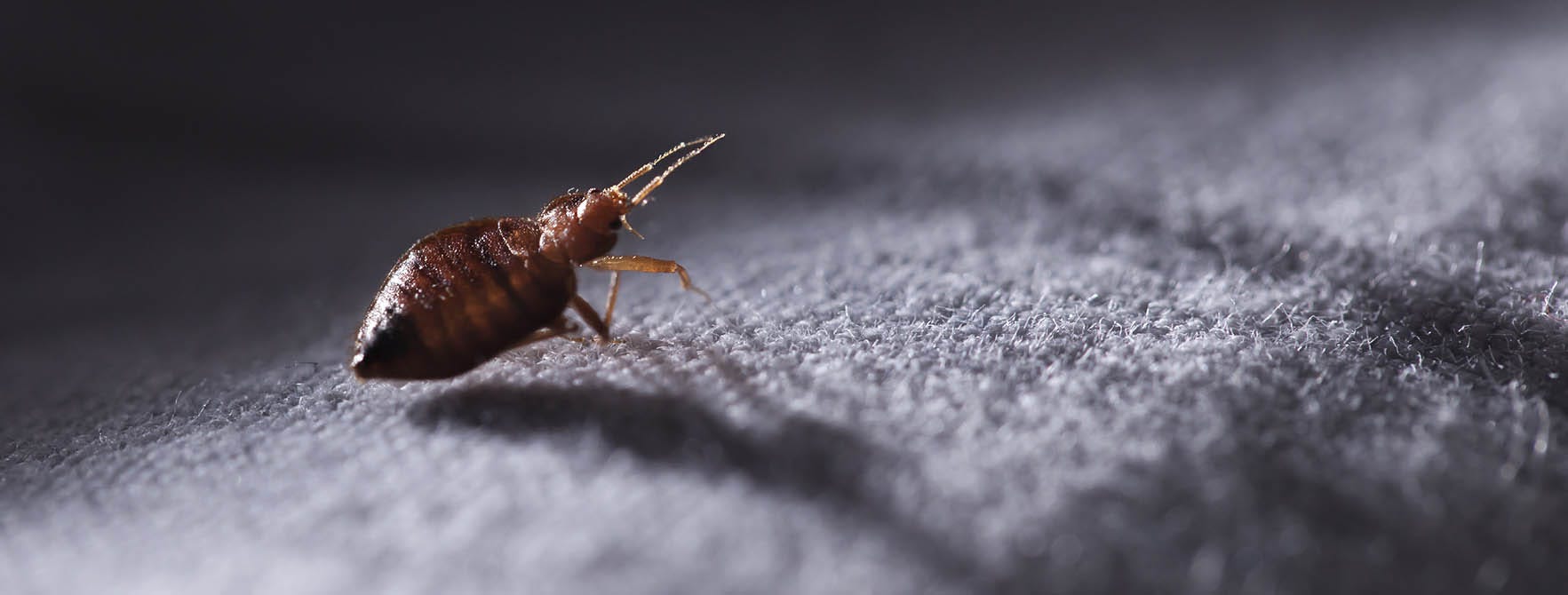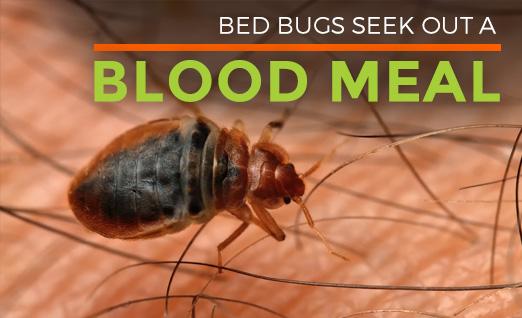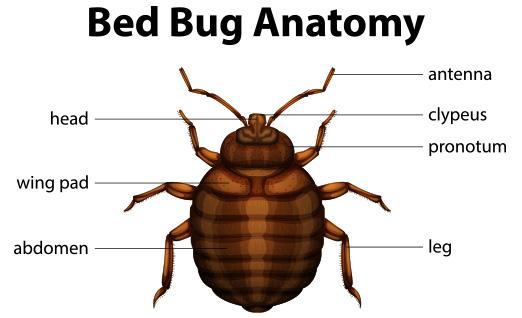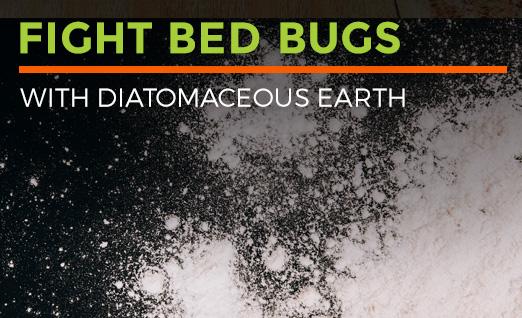
How to Get Rid of Bed Bugs
Once an infestation has established itself inside a home, it can be difficult to eliminate it because bed bugs are tiny, reproduce rapidly and can hide in small spaces. In the fall, they invade homes looking for warmth and will leave in the spring to lay eggs and feed.
Safer® Brand, however, has several effective methods for getting rid of bed bugs. This page provides you with a resource to learn more about these insects and, best of all, find out how to get rid of them!
Bed Bug Facts & Control
Are bed bugs taking over your house? Do you feel that you are out of options and don’t know the best way to get rid of the bed bugs quickly? A lot of products claim to eliminate bed bugs but require that you to spray harmful chemicals throughout your house. Safer® Brand Diatomaceous Earth utilizes the powdered form of fossilized diatoms to kill bed bugs. It’s can also be used against ants, earwigs, cockroaches, silverfish, crickets, millipedes and centipedes.
The diatomaceous earth utilized by Safer® Brand can be used inside your house as a crack and crevice treatment. Diatomaceous earth will also eliminate a wide variety of crawling insects, which makes it helpful as a garden treatment, too.
Typically, most bed bug solutions on the market include the application of synthetic chemicals and other treatments that could put you, your family and pets at risk. OMRI Listed® Safer® Brand Diatomaceous Earth is compliant for use in organic gardening and USDA compliant when applied according to the label instructions. Use it to lightly treat mattresses, furniture and pet beds.
So ... What's a Bed Bug?
The bed bugs that are in your home today are descendants of cave dwelling bugs that originally fed on the blood of bats. When humans moved out of caves, these ancient bed bugs came with them. Since that time, bed bugs have been hitching a ride with humanity, following it to every corner of the globe.
Bed bugs belong to a family of insects called Cimicidae. All members of this group of arthropods feed exclusively on the blood of warm-blooded animals. The common bed bug (Cimex lectularius) has five developmental life stages. Each immature life stage (called nymphs or instars) must ingest blood to absorb the nutrients needed to develop into the next life stage.
As they grow, bed bugs shed exoskeletons in a process called molting. After five exoskeleton molts, the bed bug reaches its full, adult size and is then capable of reproduction. Adult bed bugs, both male and female, indulge in regular blood meals to obtain the strength and nutrients they need to reproduce.
The total development process from egg to adult takes place in about 40 days when temperatures are optimal (>72° F) and a food source is present. Adult bed bugs usually have a one-year lifespan, again, if temperatures are favorable and food is available.
Bed Bug Physical Statistics
| Characteristic | Nymph | Adults |
|---|---|---|
| Color | Translucent to Light Brown | Dark Brown |
| # of Legs/Antennae | 6/2 | 6/2 |
| Flight | No | No |
| Length | 2mm to 5.5mm | 4.5mm to 7mm (about the size of an apple seed) |
| Lifespan | Hatch to adulthood: 40 days when well fed | Total insect lifespan: 6 to 12 months in ideal temperatures |

Why are Bed Bugs so Prevalent Now?
While bed bugs are not known to transmit disease, their presence is unwelcome and they often present a difficult challenge to homeowners trying to get rid of them. From the early 20th century to the 1980s, entomologists saw a sharp decline in reports of bed bugs. However, since the 1980s this nuisance insect has regained its foothold around the world. Experts suspect the recent resurgence of bed bug activity is the result of several factors:
- Increased international and domestic travel
- Lack of knowledge necessary to prevent infestations
- Increased resistance of bed bugs to pesticides
- Ineffective pest control practices
The encouraging news is that there are ways to control bed bugs. Safer® Brand Diatomaceous Earth provides a simple way to eliminate a bed bug problem without using harsh chemicals or putting your family at risk.
How Do I Know If I Have Bed Bugs?
Much of the time, a bed bug infestation is only suspected when bites appear on a person. Oftentimes, the bites are misidentified as flea, spider or mosquito bites. This allows infestations to go unnoticed and gives bed bug populations time to grow.
With that in mind, here are some things to look out for when cleaning or changing bedding:
- Small, dark spots (bed bug excrement that may smudge on fabric)
- Insect eggs and empty egg cases in great numbers (in crevices and areas normally hidden from the light)
- Molted exoskeletons (Shed from nymphs as they grow larger)
- Live bed bugs (Hiding in cracks and crevices to escape the light)
- Rusty or reddish stains on bed sheets or mattresses (Caused by bed bug excrement or when bed bugs are accidentally crushed)
Identifying bed bug bites can also be confusing. Here are some signs to look for:
- Red welts on the skin (Mostly where skin comes in contact with bed, such as your back, legs and arms)
- Waking up to itching (Bed bugs are most active between midnight to 5 a.m.)
- Persistent itching during the day
- Swelling or blisters in the suspected bite area
- Marks that you attribute to mosquito, flea or spider bites (even when out of season)
How to Check a Hotel for Bed Bugs
Hotels, whether they are new or old, fancy or run-down, can be a haven for bed bugs at any time of year. In these instances, the bed bugs simply feed on whoever is staying in the infested room at the time, rather than constantly feeding on the same person.
Unfortunately, bed bugs can hitch a ride in your suitcase or on other materials, meaning you can carry bed bugs from a hotel and back to your home.
Here is how to check a hotel room for a bed bug infestation:
- Check the bed (Peel back the sheets and look for stains, egg cases, exoskeletons or live bed bugs)
- Check the seams of the mattress, couch, curtains and chairs (Bed bugs often congregate where the fabrics are stitched together)
- Look for black spots on the wall (Bed bugs will deposit fecal matter on walls, often behind the headboard )
- Check the drawers for powder (If there’s a fine powder in drawers, an exterminator has been spreading diatomaceous earth or another insecticide)
- Smell the room and its nooks and crannies (If you smell a raspberry odor, bed bugs may be present)
What Can Bed Bugs Do to Me?
Bed bugs have a “cryptic” lifestyle, meaning they spend the majority of their time hiding in cracks and crevices where they will not be seen or disturbed.
However, when bed bugs are active, it’s between midnight and 5 a.m. During this time, they seek out a warm-blooded host (human or pet) from whom they can extract a blood meal.
Once a bed bug finds a suitable food source, they puncture the creature’s skin with their mouthparts and seek out a capillary space that has good blood flow. It’s not an exact science, so the bed bug may probe the skin several times before it starts to feed. This search often results in a cluster of bites from the same bug in a small area.
Once the bed bug settles on a location, it feeds for 5-10 minutes. After the bed bug is full, it leaves the host and crawls into a nearby crack or crevice, often preferring areas where other bed bugs are congregating.
At this a safe location, the bed bug completes the digestion of its meal and excretes its waste products. Bed bugs only feed every 3 to 7 days, which means they spend most of their lives hidden away as they slowly process their latest meal.
What Do Bed Bugs Look Like?

Depending on their life stage and if they’ve recently fed, bed bugs can have a variety of appearances:
- Adult bed bugs can easily be seen with the naked eye, are reddish brown in color, wingless, and are about the size of an apple seed.
- Immature bed bugs can also be seen with the naked eye but they are smaller than adults, and translucent whitish-yellow in color.
- Bed bug eggs are also tiny, about the size of the head of a grain of rice. The eggs are a pearl white color and have obvious eyespots if they are older than 5 days.
- Bed bugs can look somewhat different depending on their feeding status. If an adult bed bug has not fed recently, it is approximately 4.5mm (3/16 of an inch) long and oval in shape.
- A bed bug can look like a flat disc with legs before eating.
- After feeding, a bed bug elongates and inflates. A recently fed bed bug is bright red, a color that dissipates during digestion.
How Can I Get Rid of Bed Bugs?
Bed bugs have become increasingly resistant to most chemical pesticides, a fact that contributed to their recent resurgence. Using a product, such as Safer® Brand Bed Bug Killer, will help you eliminate bed bugs by killing them within 48 hours of ingesting or crawling through the product. Best of all, this OMRI Listed® solution will not harm your family or your pets when used as directed.
Still want more information about why diatomaceous earth is the top choice for a bed bug killer? Download our FREE white paper on diatomaceous earth to find out more!
Other methods for bed bug extermination:
- Pesticides – Aside from diatomaceous earth, other pesticides are available and proper application is vital. Be aware that bed bugs are highly resistant to DDT and pyrethroids.
- Isolation – You can isolate infested objects by placing them in plastic bags or using bed bug moats in an effort to starve the insects.
- Vacuuming – This method helps to reduce the severity of an infestation, but is unlikely to eliminate all bed bugs from their hiding spaces.
- Heat Treatment – Steam and clothes dryers can kill off bed bugs on clothes and small items. Raising the room temperature of an infested dwelling to 113° F will kill off an infestation, but this treatment should be performed by a qualified professional.
- Freezing – Exposure to temperatures of 3° F or below for one hour should kill bed bugs, though some of these insects can develop cold tolerance.
Additional Bed Bug Facts
- Bed bugs will travel up to 60 feet to reach their human host.
- Bed bugs are attracted to body heat and the CO2 produced by the host's exhalations.
- On average, a female bed bug will produce between 1-7 eggs per day for about 10 days after a single blood meal. She will then have to feed again to produce more eggs.
- In total, a female can produce between 5 and 20 eggs from a single blood meal. Over her entire life, she will produce about 110 eggs.
- Eggs can be laid singly or in groups. A wandering female has no preference as to where she lays her eggs.
- Under optimal conditions (temperatures >70° F but <90° F, and in the presence of a host), a bed bug population can double every 16 days.
- A bed bug can survive up to a year without feeding.
Bed Bug Control begins with Diatomaceous Earth
If your home or business is suffering from a bed bug problem, you can turn to Safer® Brand to help you in your battle against these biting blood-suckers. This OMRI Listed® powder in diatomaceous earth or Bed Bug Killer attacks these insects “mechanically” by scraping through their exoskeleton rather than poisoning them. Once this abrasive powder has burrowed through the exoskeleton, the bed bug dies by dehydration.

What Can I Use to Fight Bed Bugs?
Bed bugs have become increasingly resistant to most chemical pesticides and contributed to their resurgence. Using a diatomaceous earth product will help you eliminate bed bugs by quickly killing these parasites. Best of all, this product is an OMRI Listed® solution, which means it’s compliant for use in organic gardening.
How Does Diatomaceous Earth Work?
Diatomaceous earth is a dust-like product that contains the crushed fossilized remains of diatoms. When a bed bug crosses through the powder, the microscopic, yet sharp, diatoms cut into the bed bug’s exoskeleton, causing them to dehydrate and die. The best part about diatomaceous earth is that insects cannot develop a resistance to it since there is no chemical reaction involved.
If diatomaceous earth gets wet, it becomes ineffective and a fresh, dry layer must be applied.
But BEWARE.... all diatomaceous earth is not the same. The bed bug diatomaceous earth treatments available from Safer® Brand are made from a patented formula containing amorphous diatomaceous earth, known as silicon dioxide. This particular type of diatomaceous earth is derived from fresh water sources and is NOT the same as diatomite diatomaceous earth, which can be derived from unnatural sources. You can shop confidently knowing that Safer® Brand’s diatomaceous earth products are OMRI listed® and only contain amorphous diatomaceous earth.
When Should I Apply Bed Bug Killer?
Diatomaceous earth should be applied as soon as bed bugs are discovered in a home, structure or business. The longer you wait, the more bed bugs will emerge.
EPA Directive on Food-Grade Diatomaceous Earth
When using desiccants (diatomaceous earth or boric acid) to control bed bugs it is critical to use those that are registered by EPA and labeled for bed bug control. Desiccants that are intended for other uses, such as food-grade or for use in swimming pools, pose an increased inhalation risk to people.
Directions for Use
There are two ways to eliminate bed bugs using diatomaceous earth products from Safer® Brand.
Option 1:
- Take bed apart.
- Bed bugs are attracted to body heat and the CO2 produced by the host's exhalations.
- Use Safer® Brand Bed Bug Killer in joints, seams, cracks and channels.
- If hollow, such as square or round tubing, see that the interior of the framework is well dusted.
- Mattresses should be dusted, especially tufts, folds and edges.
- Picture frame moldings, electronics, outlets and all cracks and crevices in the room should be treated.
Option 2:
- Pour two inches of Safer® Brand Diatomaceous Earth into four small bowls
- Place the legs of your bed inside each bowl
- Make sure your bed is secured appropriately while legs remain inside the bowls
- When bed bugs make their journey to feed, they will travel through the diatomaceous earth, which will kill them within 48 hours.
Did you spill some? Learn the best methods for cleaning up diatomaceous earth.

